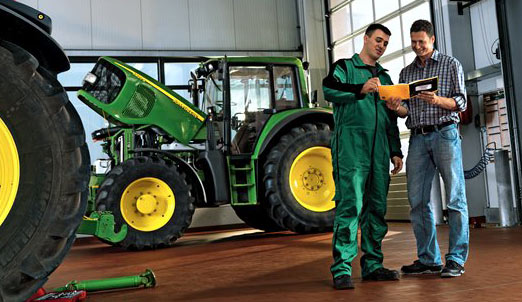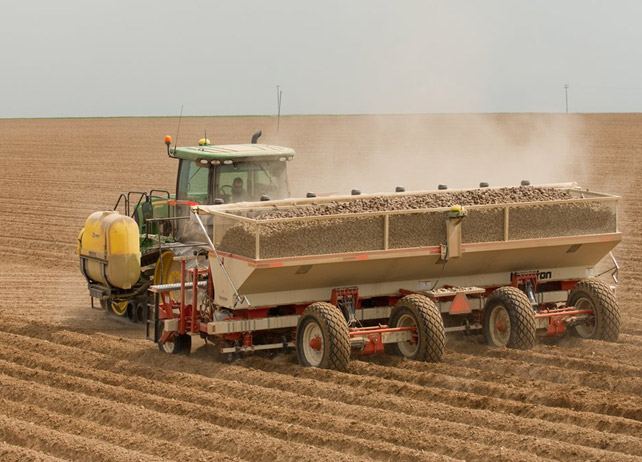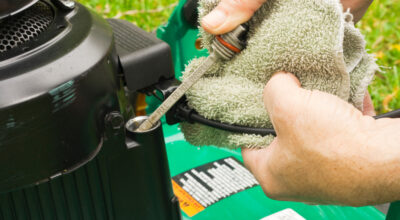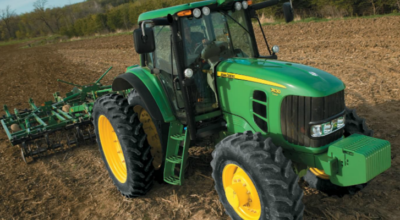With planting season in full swing, tractor operators will be spending significant amounts of time on their machines over the course of the summer. As hour after hour is spent in the field with the machine running and working hard with usage at its peak, tractor maintenance becomes nearly as vital as the planting process itself. Without a healthy machine, planting efforts could be slowed and expensive repairs will need to be made.
There are many possible preventive measures to take in an effort to keep your tractor out of repair. One of the simplest techniques is to create a tractor maintenance checklist to run-through before each trip out on the field to ensure a fully productive day’s work during this indispensable time of year.
1. Know Your Machine: This seems simple, but it can easily be overlooked. Before you head out on the field, refresh yourself about the tractor’s features and specifications by thoroughly looking through the owner’s manual. This will make sure you know every square inch of your machine and how it functions before you run through the rest of the maintenance checklist.
2. Establish a Relationship with Your Dealer: The purchase of your machine should not be the end of a relationship with the dealer. Having a reliable contact at a nearby dealer will ensure responsiveness and speedy repair if a part or attachment needs immediate repair. Without a relationship with your dealer, you run the risk of losing valuable time in the field while searching for reliable repair centers.
3. Check Fluid Levels: Before each use, run a simple check of all fluid levels on your tractor. Fluids to check include engine and hydraulic oil, transmission and brake fluid, and radiator coolant. This will allow you to see if there are any leaks within expensive parts. Catching leaks as they form could save you from replacing these parts altogether.
4. Check Air Filters: Large tractors often times run on diesel fuel, which demands a large amount of air intake. During planting season, machines are often being run on extremely dusty fields which can easily clog the filter. When these filters become dirty, use an air compressor or powerful vacuum to remove material.
5. Check Brakes and Tires: The tires on your tractor are the support system, and keep your machine rolling during long days on the field. Quickly check tire pressure, as over-inflated tires could cause excessive spinning on soil, wasted fuel, and unnecessary wear on the machine and tires. While the tires are being checked, be sure to check the condition of the tractor’s brakes, as worn-down brakes could add damage to the tractor.
6. Attachments, Pins, and Bolts: Make sure to take a walk around your tractor to check the condition and existence of any attachments, pins, or bolts. Tighten any loose pins or bolts, as loose fasteners can cause damage to thread parts, linkages and bushings. Neglecting to tighten any bolts or attachments securely could cause additional damage to other parts of the tractor.
7. In the Cab Features: As you climb into your machine before the day’s work, run a scan of all cab features to ensure full-functionality. This includes power steering, lights, horn, switches, and any other technology that might be vital for the day’s work.
8. Protect Your Machine and Keep It Clean: When the long day is over, provide any lubricants that may be needed, and be sure to thoroughly clean your tractor to prevent build-up and allow for easy identification of parts that need repair. Store your machine in a safe place away from damaging outdoor conditions as these preventive measures could prove to increase tractor life.
Before taking to the field for a full day of work on your tractor, be sure to establish your own tractor maintenance checklist. A daily or weekly scan will likely save your machine from costly repairs or damage that could otherwise be prevented. Feel free to let us know what your tractor maintenance checklist includes!





